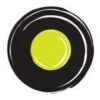Filter interviews by
Minami Metals Interview Questions and Answers
Minami Metals Interview Experiences
3 interviews found
I applied via Referral and was interviewed in Nov 2024. There was 1 interview round.
(2 Questions)
- Q1. ABOUT APQP AND USAGE
- Q2. What is Spc and benefits
(2 Questions)
- Q1. Experience on department
- Ans.
I have 3 years of experience working in the quality department, inspecting products for defects and ensuring compliance with standards.
Performed visual inspections on products to check for defects
Conducted measurements and tests to ensure products met quality standards
Documented inspection results and reported any issues to management
Collaborated with production team to address quality concerns
Trained new employees on
- Q2. Department knowledge
Quality Line Inspector Interview Questions asked at other Companies
(1 Question)
- Q1. Question on measuring device
(1 Question)
- Q1. Salary excepted and finalized the job
Interview Preparation Tips
Quality Engineer Interview Questions asked at other Companies
Top trending discussions






Interview questions from similar companies

Interview Preparation Tips
Experience: English was unpredictable.. Maths was easy but it will be good if you have practice, logical reasoning requires practice but are interesting
Tips: Leave english comprehensions for the end.. Do not waste too much time on one question even if it appears easy.. attempt the paper in the order of your comfort and mark every questions in case of NO negative marking
Duration: 60 minutes
Round: HR Interview
Tips: Smile!! And think before speaking anything, else you may contradict your own point.. Prepare "Tell me about yourself" well and guide your interview by focusing on your strongest point, you may face more questions on that point.. refer to 64 HR questions book
Round: Stress Interview
Tips: If they are giving you stress, that means they like you.. Relax!! Do not get nervous, thats what they want to check.. Think for the solution to the problem normally, you know you can crack it (Stress interview may be a part of HR, technical, case or any other interview.. you may have to make it out yourself)
Skill Tips: ""
Skills: Puzzles, Speaking skills, Aptitude, guesstimates, Case solving, presentation skills
College Name: IIT Bombay

Business Analyst Interview Questions & Answers
Ola Cabsposted on 21 Feb 2015
Interview Questionnaire
3 Questions
- Q1. Give some quantifiable factors you can use to rate( for comapny's purpose) among a repository of cab drivers we have?
- Ans.
Quantifiable factors to rate cab drivers for company's purpose
Customer ratings and feedback
Number of completed trips
Average trip duration
Percentage of on-time pickups
Accident and traffic violation history
Vehicle cleanliness and maintenance
Driver punctuality and professionalism
- Q2. If you are on the selection committee of BCCI what would be your criterion for choosing between Yuvraj Singh and Stuart Binny for the World Cup squad?
- Ans.
The criterion for choosing between Yuvraj Singh and Stuart Binny for the World Cup squad would be based on their recent performance, fitness, and team balance.
Evaluate recent performance of both players
Assess fitness levels of both players
Consider team balance and required skill sets
Analyze pitch and weather conditions of the tournament
Take into account the opposition teams and their strengths and weaknesses
- Q3. Some questions on programming (Pseudo Codes )
Interview Preparation Tips
Experience: There were questions on general aptitude like work and time, probability, and some questions were on data interpretation, coding and decoding, etc., most of the questions were very simple...but I felt the data interpretation questions to be a bit tricky (completely my opinion though).. ON THE BASIS OF THIS TEST THEY SHORTLISTED ROUGHLY 15 OUT OF 150 (again a rough figure)
Tips: Manage your time wisely...start with the type of questions you feel comfortable...try to attempt all the questions....improve your speed while practicing.
Duration: 45min minutes
Total Questions: 45
Round: Test
Experience: We were given 3 questions to solve in 30 min duration.Later we were told to walk them through our solution . Two of them were on probability(one random variables and the other on basic probability) and one was on estimating the area of an irregular figure , given some tools.
Tips: Get all the doubts regarding the questions clarified .As you have to explain your solution, it would be helpful if you could pen down all the steps clearly ( as it shows them that your thought process is an organised one). Use pictorial representation if needed. When they propose some other method be open to it and be open to any method they propose and be clear with the method you adopted. Even if you didn't arrive at the final answer, try to communicate your idea on solving the problem( most of the times they will listen to what you say).
Duration: 30min minutes
Total Questions: 3
Round: Other Interview
Experience: They were basically looking for quantifiable factors...so think of some quantifiable factors like the number of Times they are available to you in a day and the number of service providers they engage with. etc.,
For the second question again use quantifiable factors which make sense.
Tips: They patiently listened to what I said . So, be calm and don't be in a haste.
Skill Tips: Be a bit quick while solving the Aptitude questions....Know about the company before you go in for the interview process....No need of any prior knowledge in R language ...They just tested my Willingness to learn new things.
Skills: Aptitude Skills, Communication Skills, Structured thought process, Out of the box thinking, Basic programming skills ( very basic)
College Name: IIT KANPUR

Interview Preparation Tips
Experience: it was a basic test, CAT level questions and can be easily cleared
Tips: keep your cool, don't panic
Duration: 60 minutes
Total Questions: 60
College Name: IIT BOMBAY

I applied via Company Website and was interviewed before May 2019. There was 1 interview round.
Interview Questionnaire
2 Questions
- Q1. Sales related and market bases... And how to handle clients with all issues?
- Q2. Good Knowledge of marketing Fields and good communication with clients solving issues and problems?
Interview Preparation Tips
Always Curiose to grow and ready to what's your learn your job profile on your duration time period
Simple look and high thinking ......

I appeared for an interview before Apr 2021.
(2 Questions)
Round duration - 45 Minutes
Round difficulty - Medium
It was in the mid day and since I applied for a Frontend role the discussion was majorly around data structure and bit of Javascript.
The interviewer was helping and good listener.
- Q1.
Merge Two Sorted Linked Lists Problem Statement
You are provided with two sorted linked lists. Your task is to merge them into a single sorted linked list and return the head of the combined linked list.
... - Ans.
Merge two sorted linked lists into a single sorted linked list without using additional space.
Create a dummy node to start the merged list
Compare the values of the two linked lists and add the smaller value to the merged list
Move the pointer of the merged list and the pointer of the smaller value list
Continue this process until one of the lists is fully traversed
Append the remaining elements of the other list to the me
- Q2.
Sort 0 1 2 Problem Statement
Given an integer array
arrof size 'N' containing only 0s, 1s, and 2s, write an algorithm to sort the array.Input:
The first line contains an integer 'T' representing the n... - Ans.
Sort an array of 0s, 1s, and 2s in linear time complexity.
Use three pointers to keep track of 0s, 1s, and 2s while traversing the array.
Swap elements based on the values encountered to sort the array in-place.
Time complexity should be O(N) and space complexity should be O(1).
(3 Questions)
Round duration - 60 Minutes
Round difficulty - Medium
It was more of a in depth round on the framework I'm working on and problem solving.
- Q1. What is the event loop and what is its significance?
- Ans.
The event loop is a mechanism in programming that allows for asynchronous execution of code.
The event loop is a key component in JavaScript's runtime environment, responsible for handling asynchronous operations.
It continuously checks the call stack for any pending tasks and executes them in a non-blocking manner.
The event loop ensures that the program remains responsive by allowing other code to run while waiting for ...
- Q2. Can you provide examples of output-based questions in JavaScript that utilize browser APIs?
- Ans.
Output-based questions in JavaScript using browser APIs
Example 1: Write a script that uses the Geolocation API to display the user's current location on a map
Example 2: Create a program that uses the Web Audio API to play a sound when a button is clicked
Example 3: Develop a web page that uses the Canvas API to draw a simple animation
- Q3. How would you design a system to support localization in a mobile app?
- Ans.
Designing a system to support localization in a mobile app
Use resource files to store localized strings for different languages
Implement a language selection feature for users to choose their preferred language
Utilize localization libraries or frameworks to streamline the process
Consider cultural differences when localizing content, such as date formats and currency symbols
(3 Questions)
Round duration - 75 Minutes
Round difficulty - Hard
It was more of a fitment/managerial round.
Didn't had any coding questions, but was asked more on approaches and optimisations.
Discussions on the project you have worked on.
- Q1. You need to find the fastest 3 horses out of a group, given that you can only race 5 horses at a time. How would you approach this problem?
- Ans.
To find the fastest 3 horses out of a group with 5 horses racing at a time, we can use a tournament style approach.
Divide the horses into groups of 5 and race them against each other. This will give you the fastest horse in each group.
Take the winners from each group and race them against each other. The top 3 horses in this final race will be the fastest 3 overall.
Keep track of the results and compare the timings to d
- Q2. How do you debug the root cause of lag on a screen?
- Ans.
To debug lag on a screen, analyze code, check for memory leaks, optimize rendering, and use profiling tools.
Analyze code to identify any inefficient algorithms or operations causing lag.
Check for memory leaks that could be impacting performance.
Optimize rendering by reducing the number of draw calls, optimizing shaders, and minimizing overdraw.
Use profiling tools like Xcode Instruments or Android Profiler to identify p
- Q3. Can you explain the architecture of the app you have recently worked on?
- Ans.
The app I recently worked on is a social media platform for sharing photos and connecting with friends.
The app follows a client-server architecture, with the client being the mobile app and the server handling data storage and processing.
The client side is built using React Native for cross-platform compatibility.
The server side is implemented using Node.js with a MongoDB database for storing user data and photos.
The a...
Interview Preparation Tips
Tip 1 : Get your JS fundamentals right (if applying for a Frontend role, https://javascript.info/ is a good start)
Tip 2 : Apart from preparing data structures, practise on the communication skills as well (prepare your introduction, be a good listener and on spot improvisation plays key roles)
Tip 1 : highlight projects related to the job profile in your resume and mention what was your contribution in them precisely in 1/2 lines.
Tip 2 : Include URLs to applications/projects that you have build and your achievements/blog (if any)
Skills evaluated in this interview

Assistant Manager Interview Questions & Answers
Honda Motorcycle & Scooterposted on 7 Mar 2022
I applied via Company Website and was interviewed before Mar 2021. There were 2 interview rounds.
(2 Questions)
- Q1. Why should we hire you?
- Q2. I am good work experience this field.11 years
Interview Preparation Tips

I applied via Campus Placement and was interviewed in Dec 2017. There was 0 interview round.
Interview Preparation Tips
Moving forward, the interviews were scheduled for Dec 1 and consisted of three rounds. It is important that you smile, exude confidence and engage the interviewer and get them interested in you. I would suggest taking up roles involving public speaking through clubs, events, competitions, etc and hone your communication skills. Also, try having mock interviews with your friends and exchange feedback. Also, PORs really help in showcasing leadership qualities.
My first round started off with my introduction and resume walk-down. Since my resume had concentration in Economics & Finance, I was questioned on Micro-Economics, Financial terms, Pricing strategies and so forth. By now I had built up a great rapport, and the interview felt more like a conversation. I was asked on the economics behind the surge pricing, and how and when the price for customer increases & decreases and was asked real-life cases to vary the pricing (Price increases when Demand-high Supply-low; and price decreases Supply-high Demand-low. Then, I was asked to estimate the number of people chewing pan at that particular moment in Varanasi (My interview was happening around 9:30 PM). [Segment by gender and age, estimate no of ppl who chew pan, the frequency of chewing pan, and allocate a percentage who chew pan at that particular moment]. The interview ended with questions from my side and at last, I ended up giving a product suggestion to improve Ola, which was very highly appreciated (with a promise to take it up with the product team).
Second round: Resume walk down, asked again on financial terms, financial statements, valuation, etc [be completely thorough of your resume, don't fake anything], asked to suggest a couple business opportunities in Varanasi, the business model of Ola [read the difference between business model & revenue model of a business], then a mini-case/problem on increasing the revenue of a small space & budget constrained restaurant. This was followed by couple more factor questions - metrics on which drivers can rate Ola; even after increasing no of drivers we are unable to fulfill demand/increase no of booking (there is unfulfilled demand), identify all the metrics/places you'll look at to identify the problem source. Tips for case questions & factor/metrics questions: Be composed, ask permission & take time to write down your thoughts before blurting out, they are always going to ask for more metrics - don't fluster & be prepared to think and give more & more metrics/solutions. Lastly, the interview ended with questions from my side [google up interviewer profile while waiting and frame ques accordingly; my first interviewer was in product team and my second was in analytics/ML; right questions can excite the interviewers and leave an impact].
Third round: HR based questions; questions abt different Ola services - their business model, target customers, feasibility in diff regions; your goals, expectation from Ola.
Other interviewees were also asked puzzles. Finally, eight candidates were offered full-time positions.
Go through Case in Point, practice guesstimates, and puzzles[Mt Fuji, Geekforgeeks, etc] with your friends [do mocks & exchange feedback].
Best of luck!!!
College Name: IIT BHU
Minami Metals Interview FAQs
Tell us how to improve this page.
Interview Questions for Popular Designations
- Senior Executive Interview Questions
- Analyst Interview Questions
- Design Engineer Interview Questions
- Software Developer Interview Questions
- Senior Associate Interview Questions
- Graduate Engineer Trainee (Get) Interview Questions
- Test Engineer Interview Questions
- Data Analyst Interview Questions
- Show more
Minami Metals Interview Process
based on 2 interviews
Interview experience
Interview Questions from Similar Companies
Minami Metals Reviews and Ratings
based on 10 reviews
Rating in categories
|
Production Engineer
5
salaries
| ₹2 L/yr - ₹4 L/yr |
|
Manager
4
salaries
| ₹6 L/yr - ₹8 L/yr |
|
Assistant Manager
4
salaries
| ₹4.2 L/yr - ₹7.4 L/yr |
|
HR Executive
4
salaries
| ₹3 L/yr - ₹3 L/yr |
|
Quality Manager
4
salaries
| ₹5.8 L/yr - ₹6 L/yr |

Delhivery

Hyundai Motor India Limited

CARS24

Royal Enfield
- Home >
- Interviews >
- Minami Metals Interview Questions







